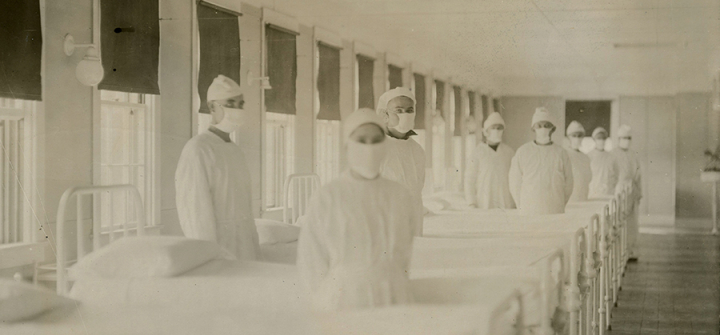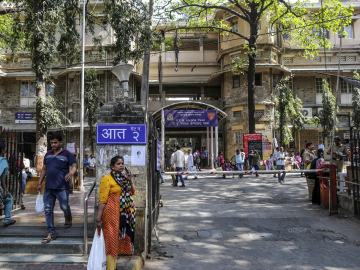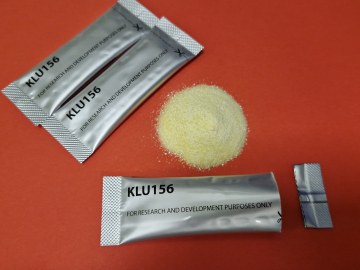US, World Still Not Ready for Another Flu Pandemic
Despite countless breakthroughs in medicine since the 1918 flu pandemic, one key advance continues to elude researchers.
Without a universal vaccine to combat ever-changing flu strains, another pandemic threatens to overwhelm US health care system, warns Tom Inglesby, MD, of the Johns Hopkins Bloomberg School of Public Health.
“What I worry about is that there could be too many people for the system to care for at once,” said Inglesby, director of the Bloomberg School's Center for Health Security. “Very difficult choices would have to be made about how to distribute medicine and how to distribute ventilators because they are in limited supply.”
"Beyond the US, where there is even more limited health care capacity, the problem would be even greater,” Inglesby said.
Inglesby said a 2006 study at his center examined the potential impact of a 1918-type pandemic a century later, based on updated US population figures and the current health care system.
“At the peak of the pandemic in the US, we’d have 7 times more people in need of ventilation than we have ventilators, and 7 times the number of people needing intensive care than we have intensive care beds,” Inglesby said.
During the past 3 decades, estimated annual seasonal flu deaths in the US have ranged from a low of 3,000 to a high of 56,000, according to the US CDC.
The relatively mild pandemic of 1957, 1968 and 2009 killed between 12,000 and 70,000 in the US. The severe 1918 pandemic killed up to an estimated 50-100 million people worldwide, including about 675,000 in the US. Deaths a century ago were primarily attributed to lack of a flu vaccine, lack of antibiotics to treat superimposed bacterial pneumonia, and the absence of basic medical supplies that we take for granted now, like oxygen, IV fluids and mechanical ventilation.
Since then, improvements include effective treatments for pneumonia and emergence of vaccines that can generally be developed for a new flu strain within 6 months. Studies show that vaccines reduce flu risk from 40 to 60%—and scientists constantly seek to make them faster and more effective.
“If science could develop a universal flu vaccine that protects people from all flus, there would be no risk of pandemics anymore,” Inglesby said. “Right now, that’s still a concept.”
That concept developed into an intriguing possibility in recent years, following the discovery that parts of the viral protein do not change season to season—meaning they could be targeted for a universal vaccine.
The National Institute of Allergy and Infectious Diseases, part of the US NIH, gathered top scientists in June to discuss prospects and strategies to develop such a vaccine.
“It’s easier said than done because there are a lot of rather significant scientific obstacles,” said NIAID Director Anthony Fauci. “It’s going to be an iterative process.”
“I think we could develop, within a few years, a version of a universal flu vaccine that may not be protective of all strains, but maybe a majority,” Fauci said. Scientists would then target strains in other major flu groups before eventually covering all, he said.
A decade ago, the US government stepped up efforts to monitor and prepare for potential threats—part of NIAID’s and the CDC’s missions—by creating the Biomedical Advanced Research and Development Authority to develop counter-measures for illnesses that threaten to explode into a crisis.
Key to success is cooperation—a scarce ingredient in the current US government. During the Obama administration, Congress took more than 8 months to approve just about half of the requested funding to combat the Zika virus.
“I would hope and expect that if there is a flu event that seems to have pandemic potential, the Administration and Congress would act rapidly,” Inglesby said. That would include producing large supplies of vaccine and medicines, and to prepare the US hospital and public health systems to care for the ill.
"However, there is only so much scale-up that can be done in an emergency. This is why it is so important to have preparedness programs in place ahead of time,” Inglesby said.
Join the thousands of subscribers who rely on Global Health NOW summaries and exclusive articles for the latest public health news. Sign up for our free weekday enewsletter, and please share the link with friends and colleagues: http://www.globalhealthnow.org/subscribe.html
Corpsmen in cap and gown ready to attend patients in influenza ward of US Naval Hospital in Mare Island, California, December 10, 1918. Navy Medicine via Wikimedia Commons/Public Domain.




